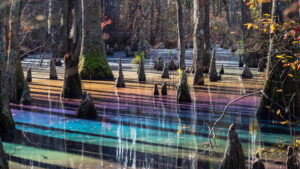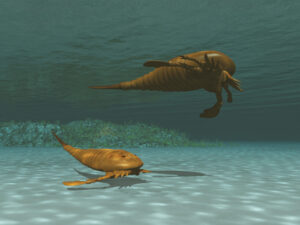We know of two species of Ice Age woolly rhinos: the Siberian and the European. To find out more about the European species, researchers have used an unusual material: ancient hyena poo.
Fossilized feces
In the distant past, hyenas were natural predators of the European woolly rhinoceros, and researchers sought out their fossilized feces in a few museum collections. The samples came from caves in Germany’s Lone Valley. The coprolites (fossilized poo) were in soil that dates to the Middle Paleolithic era — 300,000 to 30,000 years ago.
They isolated the DNA of a hyena and a woolly rhino from each sample. The rhino DNA survived processing through the hyena’s digestive tract. So from this, they assembled the mitochondria genome of the European woolly rhino. This is the first time anyone has recovered this species’ genome. Previously, we only had this genetic data from the Siberian species.
Mitochondrial genomes contain the genetic material found in the mitochondria of cells. It does not degrade as easily as nuclear DNA, so is incredibly useful when studying ancient extinct species.
DNA preserved for 1000s of years
Analysis of the genome tells us about the physical characteristics, evolution, and behavior of these giant Ice Age herbivores. The team found genes that code for hair growth, fat growth, and for enduring cold temperatures.
Next, they compared the genomes of both species of woolly rhino. The European rhino started to split between 2.5 million and 150,000 years ago. This contradicts previous assumptions that the woolly rhino expanded into Western Europe during cold periods in the Late Pleistocene era.
This study not only provides details of a previously understudied species, it also highlights the possibility of using fossilized feces to study other extinct animals.
“The fact that these were retrieved with relative ease from a coprolite of another species stresses the value of obtaining genomic data from a wide range of materials,” the authors commented.
Coprolites can preserve DNA for thousands of years. If researchers can do this for other Ice Age species, it could significantly expand our knowledge of the era.






